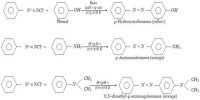A single-grade motor oil has a viscosity which varies steeply with temperature, limiting its use to conditions where the temperature changes are such that the viscosity remains in the required range. The temperature dependence of viscosity can be made much weaker by inclusion of a suitable additive. Such additives are polymeric in nature.
An oil so treated is a multigrade oil. A multigrade oil remains close to its ‘cold start’ viscosity at the highest temperature it experiences in circulation by reason of the action of the polymer additives. Although single-grade oils might in today’s world still find application to such devices as lawnmowers, lubricants for automotive use are almost always multigrade. Below is a partial coverage of the categorisation of multigrade oils by the Society of Automotive Engineers (SAE).

A property related to viscosity is lubricity. This has been discussed for fuels in previous chapters and is also a quantity in the characterisation of motor oils. It was stated that, in the US, 520 gm is seen as the maximum acceptable value for a diesel fuel. A reader should recall that this is a scar dimension measured after metal surfaces have been in contact under specified conditions in the presence of the subject hydrocarbon. One’s intuition might well be that motor fuels have lubricities lower than this, but not by an order of magnitude.
Such a view is supported by ‘scar’ data for lubricant oils where these are available. For example a proprietary lubricant having a kinematic viscosity at 40°C of 115 cSt (placing it in those terms 10W-40 and 20W-50 the table of viscosities above) has a ‘scar’ value of 350 pm. This is exactly one third below the value for diesel quoted above.













